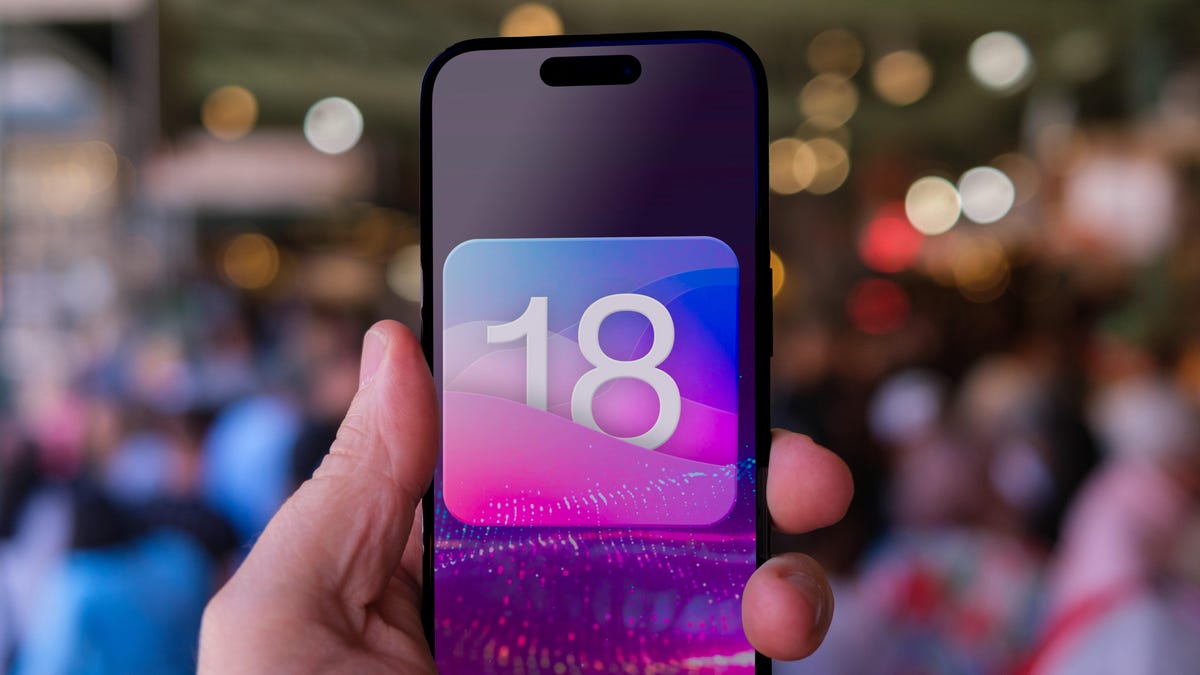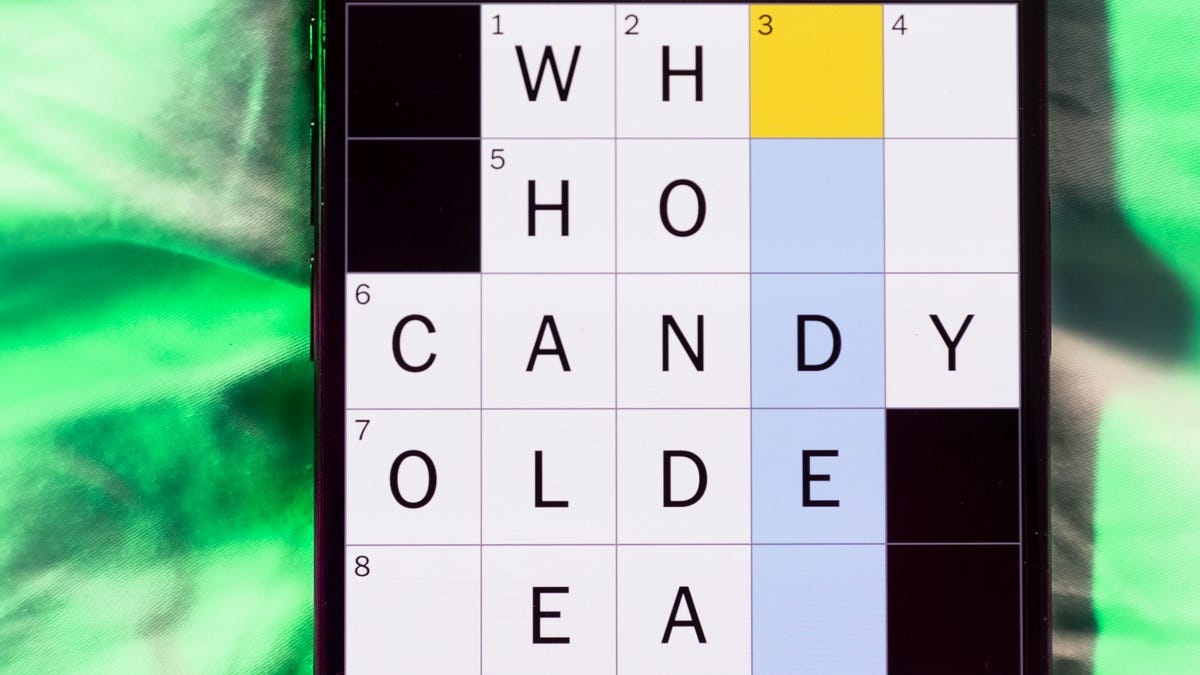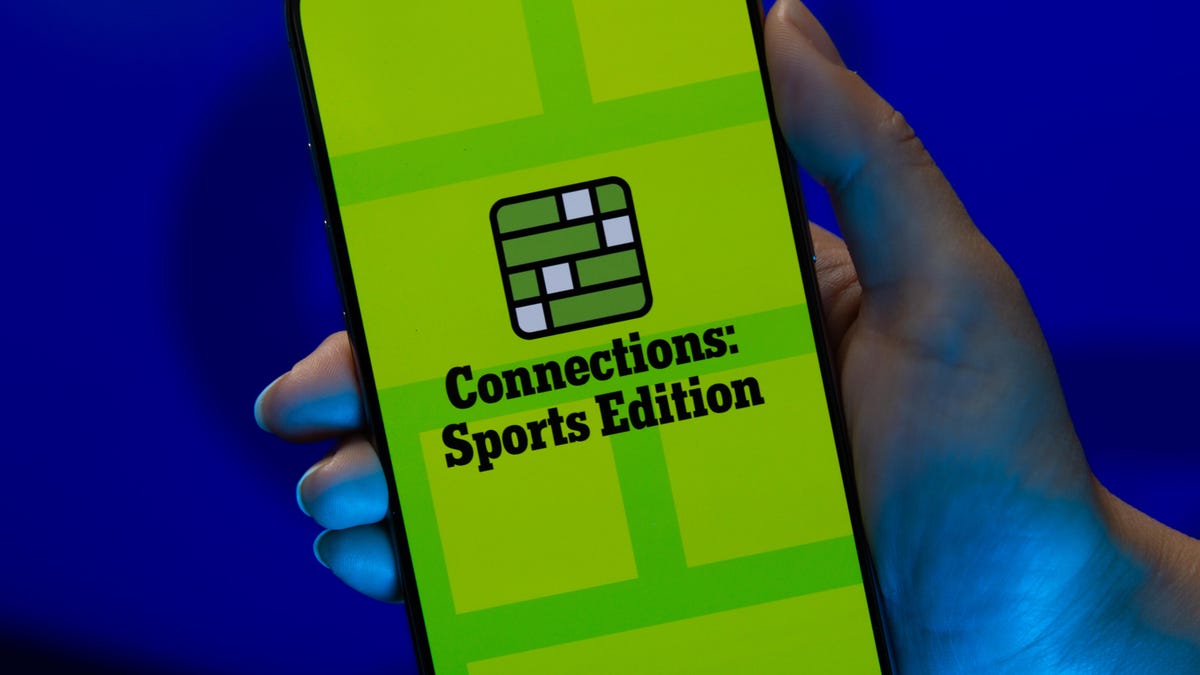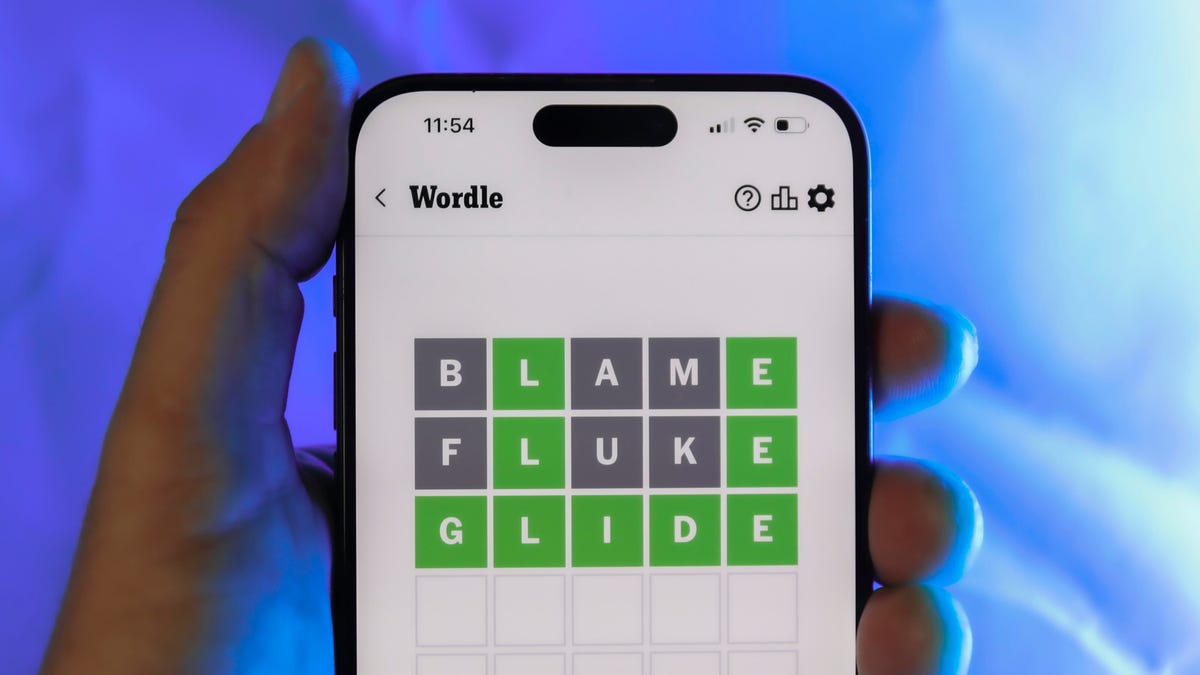Technologies
Installing the iOS 18.5 Public Beta? Honest Advice About Why You Should Wait
Make sure you’re going into any beta software with clear expectations.

Now that Apple has announced dates for WWDC 2025, you can bet that the company’s engineers are putting in long hours getting ready to unveil iOS 19 and whatever else is up their sleeves. But it’s also clear they’re hard at work on the next version of the current iPhone software with the release of the iOS 18.5 public beta.
But before you start that download, I’m here to remind you of the «beta» part of «public beta.» Prerelease software is unfinished, and even though a public beta means Apple is confident enough to seed it on several thousand iPhones, the goal is to see how the update fares before it’s deployed on millions of iPhones. Although the iOS 18.5 developer beta has been pretty stable, one never knows what bugs could slip through.
For more on what iOS 18 brings to the iPhone, make sure you check out everything Apple announced at its September «Glowtime» event and how Apple Intelligence affects the way we use Apple devices.
A positive word about installing the iOS 18.5 public beta
The public beta is more stable than the developer betas, which are intended for … developers.
But «more stable» isn’t the same as «rock solid.» Apple is still adding and changing features in the iOS 18.5 betas before the anticipated release of iOS 18.5 in April or May.
If you decide to install the iOS 18.5 public beta, I recommend doing it on a separate iPhone that isn’t used as your main personal phone. iOS 18.5 will work with models as old as the iPhone SE (second generation) and iPhone XR, so reach into the back of your tech drawer and put that forgotten iPhone into service.
Also, as always, make sure you have good backups of your data.
Bugs are part of the iOS 18.5 public beta
Now, let’s discuss why upgrading to the iOS public beta might be a bad idea.
Software bugs at the development stage are to be expected — in fact, that’s kinda the point. Now is the time for bugs to skitter into the light so developers can catch them and Apple can fix them before the final release. Opening the public beta to more testers helps flush out odd interactions with a much larger pool of iPhones and third-party apps.
Bugs can vary across the spectrum. You could face connectivity issues with Bluetooth or Wi-Fi, or end up with third-party applications crashing from time to time. Features that work perfectly on iOS 18 might not be up to par on iOS 18.5, even if they aren’t necessarily tied to new iOS 18.5 features. And runaway background processes could keep the system running hotter than normal, decreasing not just how long the phone operates on a battery charge, but potentially stressing the battery’s lifespan. To be fair, I’ve never dealt with any show-stopping, brick-your-phone bugs in a beta — usually, they’re a series of annoyances that can grate on you after a while. But all of this is perfectly normal in developer and public betas.
But if you don’t want to deal with bugs and other issues that could make your phone more difficult to use, you probably don’t want the iOS 18.5 public beta on your primary iPhone.
Your battery life may worsen
Did you recently buy a recommended portable charger for your iPhone? Expect to make more use of it while running beta software. Energy efficiency is usually the last thing Apple’s developers optimize, because the priority at this point is to make sure features work and bugs are stamped out.
An iOS update also triggers a host of internal indexing, which consumes a lot of energy for a few hours or days after installation. The Photos app, for example, updates its database of recognized people, scans images for new recognizable objects or scenes for search purposes and looks for duplicates.
Performance may take a hit
Partially because of the reindexing of gigabytes of data on your phone, the iOS 18.5 public beta will almost certainly not deliver the performance you might be expecting. Processor-intensive apps and games also need to be tuned to work with the new iOS, so stutters and glitches are normal.
For example, Game Mode is a new feature for iOS (it first appeared in MacOS Sonoma) that redirects resources to improve frame rates and Bluetooth latency, so the most demanding games might perform better than under iOS 17 or iOS 18. However, Game Mode works at a low level and could be interrupted by beta components.
Not all new iOS 18 features are there yet
We already know many of the razzle-dazzle Apple Intelligence features won’t be available right away, even though iOS 18.4 gave us a few more to play with. Such is the life cycle of development: Some features get put on the back burner so others can be completed.
I know it’s tough to be patient when future features are just a download away. But I also don’t want you to be burned (as I have in the past).
For more about iOS 18, see how the new Passwords app works across all your devices.
Technologies
Today’s NYT Mini Crossword Answers for Saturday, Dec. 27
Here are the answers for The New York Times Mini Crossword for Dec. 27.

Looking for the most recent Mini Crossword answer? Click here for today’s Mini Crossword hints, as well as our daily answers and hints for The New York Times Wordle, Strands, Connections and Connections: Sports Edition puzzles.
Need some help with today’s Mini Crossword? It’s pretty long for a Mini Crossword, and some of the clues are tricky. The answer to 10-Across is not an expression I use, for sure. Read on. And if you could use some hints and guidance for daily solving, check out our Mini Crossword tips.
If you’re looking for today’s Wordle, Connections, Connections: Sports Edition and Strands answers, you can visit CNET’s NYT puzzle hints page.
Read more: Tips and Tricks for Solving The New York Times Mini Crossword
Let’s get to those Mini Crossword clues and answers.
Mini across clues and answers
1A clue: Fashionable
Answer: HIP
4A clue: Product sold on «The Office»
Answer: PAPER
6A clue: One writing a performance review
Answer: MANAGER
8A clue: With 5-Down, redundant synonym of «outcome»
Answer: END
9A clue: Quiet ___ mouse
Answer: ASA
10A clue: Gives constant compliments, in slang
Answer: GASESUP
12A clue: Ski mountain bump
Answer: MOGUL
13A clue: Uneasy feeling
Answer: ANGST
Mini down clues and answers
1D clue: Personally involved
Answer: HANDSON
2D clue: Hoppy beer, for short
Answer: IPA
3D clue: Mythical horse whose name is an anagram of 10-Across
Answer: PEGASUS
4D clue: Last word in the palindromic sentence «A man, a plan, a canal …»
Answer: PANAMA
5D clue: See 8-Across
Answer: RESULT
6D clue: Ryan of «When Harry Met Sally …»
Answer: MEG
7D clue: Genre for Playboi Carti and Cardi B
Answer: RAP
11D clue: Something in an Easter basket
Answer: EGG
Don’t miss any of our unbiased tech content and lab-based reviews. Add CNET as a preferred Google source.
Technologies
Today’s NYT Connections: Sports Edition Hints and Answers for Dec. 27, #460
Here are hints and the answers for the NYT Connections: Sports Edition puzzle for Dec. 27, No. 460.

Looking for the most recent regular Connections answers? Click here for today’s Connections hints, as well as our daily answers and hints for The New York Times Mini Crossword, Wordle and Strands puzzles.
Today’s Connections: Sports Edition is a real challenge. That purple category wants you to hunt out something related in four different words, and it’s a toughie. If you’re struggling with today’s puzzle but still want to solve it, read on for hints and the answers.
Connections: Sports Edition is published by The Athletic, the subscription-based sports journalism site owned by The Times. It doesn’t appear in the NYT Games app, but it does in The Athletic’s own app. Or you can play it for free online.
Read more: NYT Connections: Sports Edition Puzzle Comes Out of Beta
Hints for today’s Connections: Sports Edition groups
Here are four hints for the groupings in today’s Connections: Sports Edition puzzle, ranked from the easiest yellow group to the tough (and sometimes bizarre) purple group.
Yellow group hint: Something you save.
Green group hint: An Olympic sport.
Blue group hint: Toronto pitchers.
Purple group hint: Think about the alphabet and look for something hidden.
Answers for today’s Connections: Sports Edition groups
Yellow group: Memento.
Green group: Types of wrestling.
Blue group: Blue Jays to win Cy Young Award.
Purple group: Ends in a homophone for a letter of the alphabet.
Read more: Wordle Cheat Sheet: Here Are the Most Popular Letters Used in English Words
What are today’s Connections: Sports Edition answers?
The yellow words in today’s Connections
The theme is memento. The four answers are collectible, keepsake, memorabilia and souvenir.
The green words in today’s Connections
The theme is types of wrestling. The four answers are arm, freestyle, Greco-Roman and sumo.
The blue words in today’s Connections
The theme is Blue Jays to win Cy Young Award. The four answers are Clemens, Halladay, Hentgen and Ray.
The purple words in today’s Connections
The theme is ends in a homophone for a letter of the alphabet. The four answers are batter’s eye (I), blue jay (J), golf tee (T) and pool cue (Q).
Don’t miss any of our unbiased tech content and lab-based reviews. Add CNET as a preferred Google source.
Technologies
Today’s Wordle Hints, Answer and Help for Dec. 27, #1,652
Here are hints and the answer for today’s Wordle for Dec. 27, No. 1,652.

Looking for the most recent Wordle answer? Click here for today’s Wordle hints, as well as our daily answers and hints for The New York Times Mini Crossword, Connections, Connections: Sports Edition and Strands puzzles.
Today’s Wordle puzzle came together pretty quickly for me this time. If you need a new starter word, check out our list of which letters show up the most in English words. If you need hints and the answer, read on.
Read more: New Study Reveals Wordle’s Top 10 Toughest Words of 2025
Today’s Wordle hints
Before we show you today’s Wordle answer, we’ll give you some hints. If you don’t want a spoiler, look away now.
Wordle hint No. 1: Repeats
Today’s Wordle answer has no repeated letters.
Wordle hint No. 2: Vowels
Today’s Wordle answer has one vowel.
Wordle hint No. 3: First letter
Today’s Wordle answer begins with B.
Wordle hint No. 4: Last letter
Today’s Wordle answer ends with H.
Wordle hint No. 5: Meaning
Today’s Wordle answer can refer to a quantity of goods produced at one time.
TODAY’S WORDLE ANSWER
Today’s Wordle answer is BATCH.
Yesterday’s Wordle answer
Yesterday’s Wordle answer, Dec. 26, No. 1651 was SPEED.
Recent Wordle answers
Dec. 22, No. 1647: CONCH
Dec. 23, No. 1648: GLINT
Dec. 24, No. 1649: SPOOL
Dec. 25, No. 1650: PRISM
Don’t miss any of our unbiased tech content and lab-based reviews. Add CNET as a preferred Google source.
-

 Technologies3 года ago
Technologies3 года agoTech Companies Need to Be Held Accountable for Security, Experts Say
-

 Technologies3 года ago
Technologies3 года agoBest Handheld Game Console in 2023
-

 Technologies3 года ago
Technologies3 года agoTighten Up Your VR Game With the Best Head Straps for Quest 2
-

 Technologies4 года ago
Technologies4 года agoBlack Friday 2021: The best deals on TVs, headphones, kitchenware, and more
-

 Technologies4 года ago
Technologies4 года agoVerum, Wickr and Threema: next generation secured messengers
-

 Technologies4 года ago
Technologies4 года agoGoogle to require vaccinations as Silicon Valley rethinks return-to-office policies
-

 Technologies4 года ago
Technologies4 года agoOlivia Harlan Dekker for Verum Messenger
-

 Technologies4 года ago
Technologies4 года agoiPhone 13 event: How to watch Apple’s big announcement tomorrow
